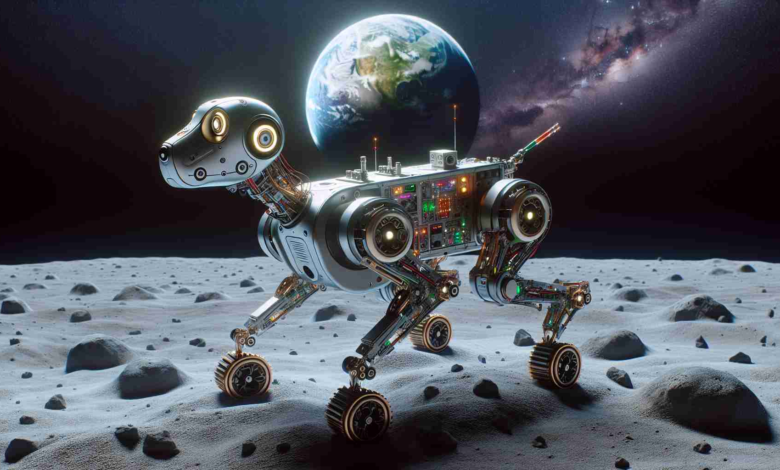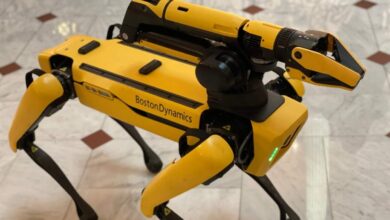The Robotic Dog on a Lunar Training Mission

NASA’s research venture into autonomous robotic exploration takes a leap forward with Spirit, a robotic dog poised to navigate the Moon’s unforgiving surface. Amidst the sprawling landscape of Mount Hood, Oregon, ‘Spirit’ undergoes high-altitude testing. This marks a pivotal step in the Legged Autonomous Surface Science in Analog Environments (LASSIE) project. The initiative steers clear of the spotlight yet demonstrates significant strides in robotics and space exploration.
With a generous $2 million grant from NASA for a two-year period, researchers are fine-tuning robotic capabilities so these mechanical canines can scan and analyze the harsh lunar terrain autonomously. The goal is to imbue these robots with the skills to adapt in real-time, eventually enabling them to conquer various planetary surfaces. The collaborative effort brings together engineers, planetary scientists, and cognitive specialists in an unparalleled melding of expertises.
The core principle driving this robotic program is rapid adaptability. Robots must decipher the lunar topography, modifying navigation tactics swiftly to ensure optimal pathfinding. One impressive feature of these robot dogs is their potential to form an information network, sharing vital data about ground conditions and creating a comprehensive map to gauge traversability risks.
This futuristic fleet isn’t limited to quadruped designs—research extends to rolling and six-legged constructs. The program embodies a future where robots can perform search and rescue missions on extraterrestrial terrains or link together to resolve navigational challenges.
In preparation for their celestial endeavor, the team eyes White Sands National Park for their ensuing field trial, symbolizing a monumental stride towards interplanetary exploration and the robotic mastery of unknown worlds.
In summary, researchers aim for Spirit and its robotic brethren to not only walk on the Moon but to enhance robotic autonomy and cooperative exploration, paving the way for new possibilities in space robotic missions.
Robotic Advancement in Space Exploration
NASA’s investment in the future of autonomous robotic technology, such as the exploration-centric ‘Spirit’ robotic dog, is a clear indicator of the agency’s commitment to overcoming the challenges associated with space exploration. ‘Spirit’, part of the Legged Autonomous Surface Science in Analog Environments (LASSIE) project, is at the forefront of a new wave of robots capable of traversing and analyzing the Moon’s surface autonomously. This approach could redefine how scientists and engineers tackle planetary exploration, highlighting a significant shift in methodology away from heavy reliance on human-operated rovers towards more independent robotic systems.
Industry Impact and Market Forecast
The space robotics industry is set for substantial growth, with the increasing interest in lunar and Martian exploration serving as powerful catalysts. Market forecasts predict a bullish trend, underscoring the proliferation of technologies applied in extraterrestrial environments. The growth is fueled by advancements in artificial intelligence (AI), machine learning, and the miniaturization of sensors and electronics, which enable robots like ‘Spirit’ to operate more efficiently in space.
The utilization of robots for tasks such as satellite maintenance, space debris removal, and in situ resource utilization also bolsters the potential market expansion. Companies and organizations active in the space robotics sector are gearing up for this boom, as they anticipate the role these technologies will play in upcoming missions to the Moon, Mars, and beyond.
Industry Challenges and Issues
Despite the optimism, several challenges confront the space robotics industry. The harsh conditions of space environments, including extreme temperatures, radiation, and abrasive regolith, put immense stress on robotic components, demanding significant advancements in materials and engineering. The latency in communication between Earth and distant celestial bodies also poses a significant hurdle for real-time control, necessitating further advancements in AI for autonomous decision-making.
The economics of space exploration and robotics is another concern, as budget constraints often limit the scale and scope of projects. Partnerships between governmental agencies, such as NASA, and the burgeoning private space sector are essential to address funding and technical expertise challenges.
Conclusion
The development and testing of robotic explorers, including ‘Spirit’, represent key milestones in space robotics. Researchers and engineers from diverse fields collaborate to empower these machines with the sophisticated levels of autonomy required for extraterrestrial exploration. By mapping and navigating the Moon’s surface autonomously, these robots are not just walking but embarking on a path that may revolutionize our understanding and presence in space.
For more information on the current state of space exploration and robotics, and potentially the developments similar to NASA’s ‘Spirit’, you can visit the official NASA website at NASA or the website of the Space Robotics Industry Association.

Jerzy Lewandowski, a visionary in the realm of virtual reality and augmented reality technologies, has made significant contributions to the field with his pioneering research and innovative designs. His work primarily focuses on enhancing user experience and interaction within virtual environments, pushing the boundaries of immersive technology. Lewandowski’s groundbreaking projects have gained recognition for their ability to merge the digital and physical worlds, offering new possibilities in gaming, education, and professional training. His expertise and forward-thinking approach mark him as a key influencer in shaping the future of virtual and augmented reality applications.



